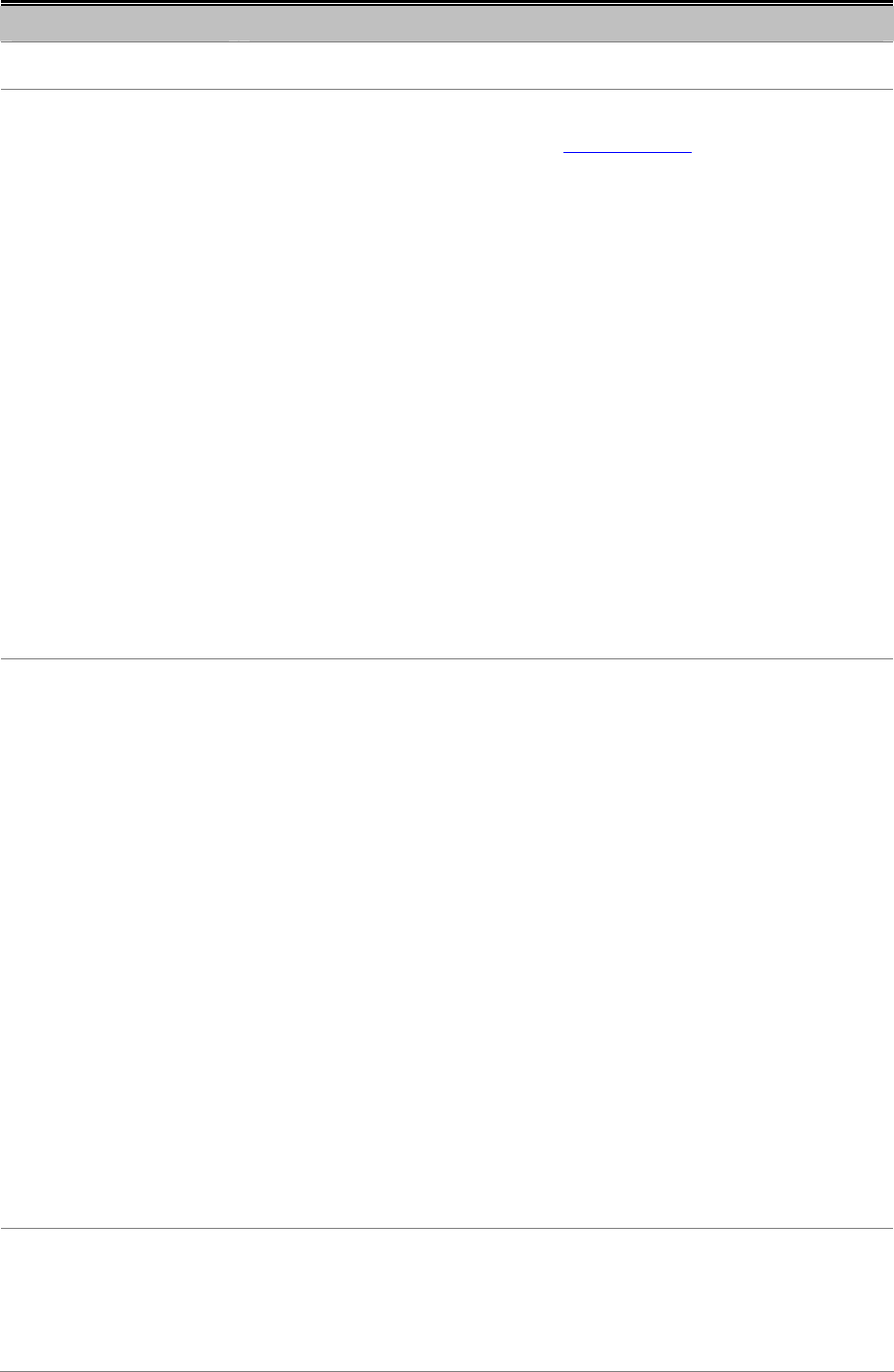Manual
Table Of Contents
- 1. INTRODUTION
- 2. INSTALLATION
- 3. SWITCH MANAGEMENT
- 4. WEB CONFIGURATION
- 4.1 Main WEB PAGE
- 4.2 System
- 4.3 Simple Network Management Protocol
- 4.4 Port Management
- 4.5 Link Aggregation
- 4.6 VLAN
- 4.7 Rapid Spanning Tree Protocol
- 4.8 Quality of Service
- 4.9 Multicast
- 4.10 IEEE 802.1X Network Access Control
- 4.10.1 Understanding IEEE 802.1X Port-Based Authentication
- 4.10.2 802.1X System Configuration
- 4.10.3 802.1X and MAC-Based Authentication Port Configuration
- 4.10.4 802.1X Port Status
- 4.10.5 802.1X and MAC-Based Authentication Statistics
- 4.10.6 Windows Platform RADIUS Server Configuration
- 4.10.7 802.1X Client Configuration
- 4.11 Access Control Lists
- 4.12 Address Table
- 4.13 Port Security (To be Continued)
- 4.14 LLDP
- 4.15 Network Diagnastics
- 4.16 Stacking – SGSW-24040 / SGSW-24040R
- 4.17 Power over Ethernet (SGSW-24040P / SGSW-24040P4)
- 5. COMMAND LINE INTERFACE
- 6. Command Line Mode
- 6.1 System Command
- 6.2 Port Management Command
- 6.3 Link Aggregation Command
- 6.4 VLAN Configuration Command
- 6.5 Spanning Tree Protocol Command
- 6.6 Multicast Configuration Command
- 6.7 Quality of Service Command
- 6.8 802.1x Port Access Control Command
- 6.9 Access Control List Command
- 6.10 MAC Address Table Command
- 6.11 LLDP Command
- 6.12 Stack Management Command
- 6.13 Power over Ethernet Command
- 7. SWITCH OPERATION
- 8. POWER OVER ETHERNET OVERVIEW
- 9. TROUBLE SHOOTING
- APPENDEX A
- APPENDEX B : GLOSSARY

User’s Manual of WGSW-24040 Series
SGSW-24040/24240 Series
150
Object Description
• Port
The port number for which the configuration below applies.
• Admin State
Sets the authentication mode to one of the following options (only used when
802.1X or MAC-based authentication is globally enabled
):
• Auto: Requires an 802.1X-aware client (supplicant) to be authorized by the
authentication server. Clients that are not 802.1X-aware will be denied
access.
• Authorized: Forces the port to grant access to all clients, 802.1X-aware or
not. The switch transmits an EAPOL Success frame when the port links up.
• Unauthorized: Forces the port to deny access to all clients, 802.1X-aware
or not. The switch transmits an EAPOL Failure frame when the port links
up.
• MAC-Based: Enables MAC-based authentication on the port. The switch
doesn't transmit or accept EAPOL frames on the port. Flooded frames and
broadcast traffic will be transmitted on the port, whether or not clients are
authenticated on the port, whereas unicast traffic against an unsuccessfully
authenticated client will be dropped. Clients that are not (yet) successfully
authenticated will not be allowed to transmit frames of any kind.
• Port State
The current state of the port. It can undertake one of the following values:
• 802.1X Disabled: 802.1X and MAC-based authentication is globally
disabled.
• Link Down: 802.1X or MAC-based authentication is enabled, but there is
no link on the port.
• Authorized: The port is authorized. This is the case when 802.1X
authentication is enabled, the port has link, and the Admin State is "Auto"
and the supplicant is authenticated or the Admin State is "Authorized".
• Unauthorized: The port is unauthorized. This is the case when 802.1X
authentication is enabled, the port has link, and the Admin State is "Auto",
but the supplicant is not (yet) authenticated or the Admin State is
"Unauthorized".
• X Auth/Y Unauth: X clients are currently authorized and Y are
unauthorized. This state is shown when 802.1X and MAC-based
authentication is globally enabled and the Admin State is set to
"MAC-Based".
• Max Clients
This setting applies to ports running MAC-based authentication, only.
The maximum number of clients allowed on a given port can be configured
through the list-box and edit-control for this setting. Choosing the value "All" from
the list-box allows the port to consume up to 104 client state-machines. Choosing










